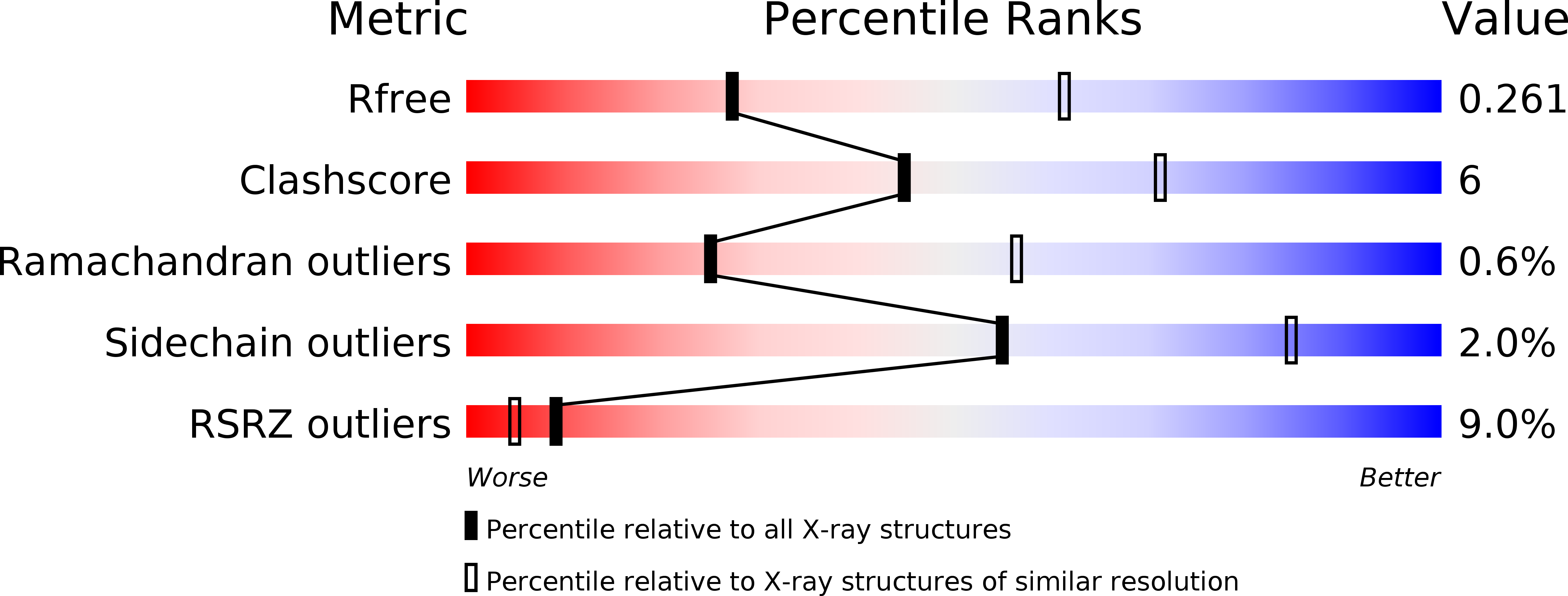
Deposition Date
2015-06-06
Release Date
2015-10-14
Last Version Date
2024-11-06
Entry Detail
PDB ID:
5BW8
Keywords:
Title:
2.8 A crystal structure of a Get3-Get4-Get5 intermediate complex from S.cerevisiae
Biological Source:
Source Organism:
Saccharomyces cerevisiae (strain RM11-1a) (Taxon ID: 285006)
Saccharomyces cerevisiae (strain ATCC 204508 / S288c) (Taxon ID: 559292)
Saccharomyces cerevisiae (Taxon ID: 4932)
Saccharomyces cerevisiae (strain ATCC 204508 / S288c) (Taxon ID: 559292)
Saccharomyces cerevisiae (Taxon ID: 4932)
Host Organism:
Method Details:
Experimental Method:
Resolution:
2.80 Å
R-Value Free:
0.26
R-Value Work:
0.22
R-Value Observed:
0.22
Space Group:
P 21 21 2


